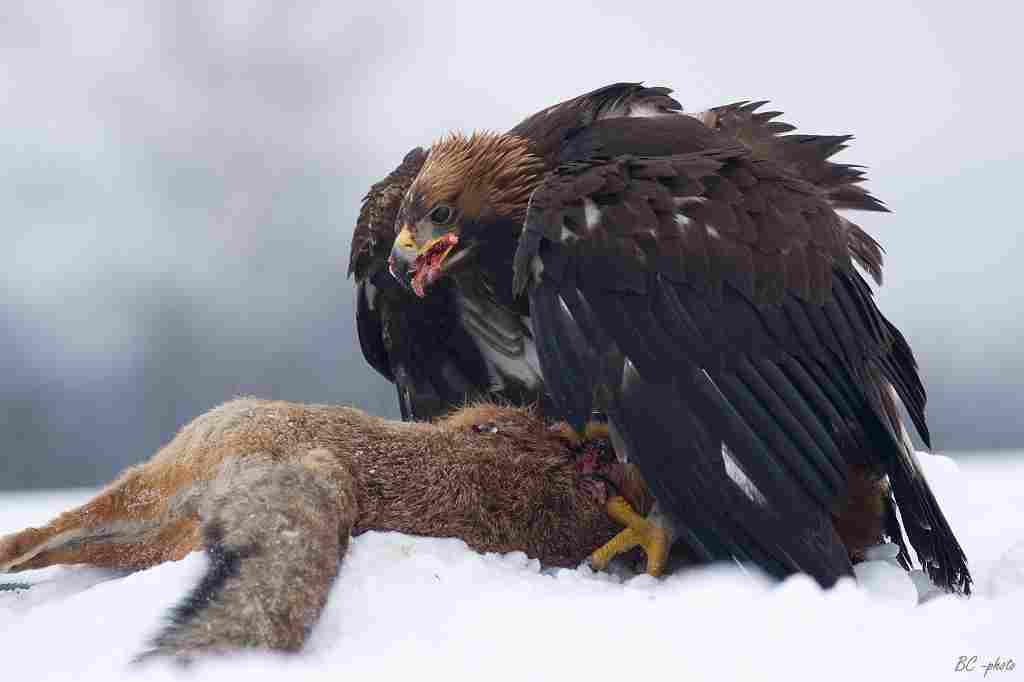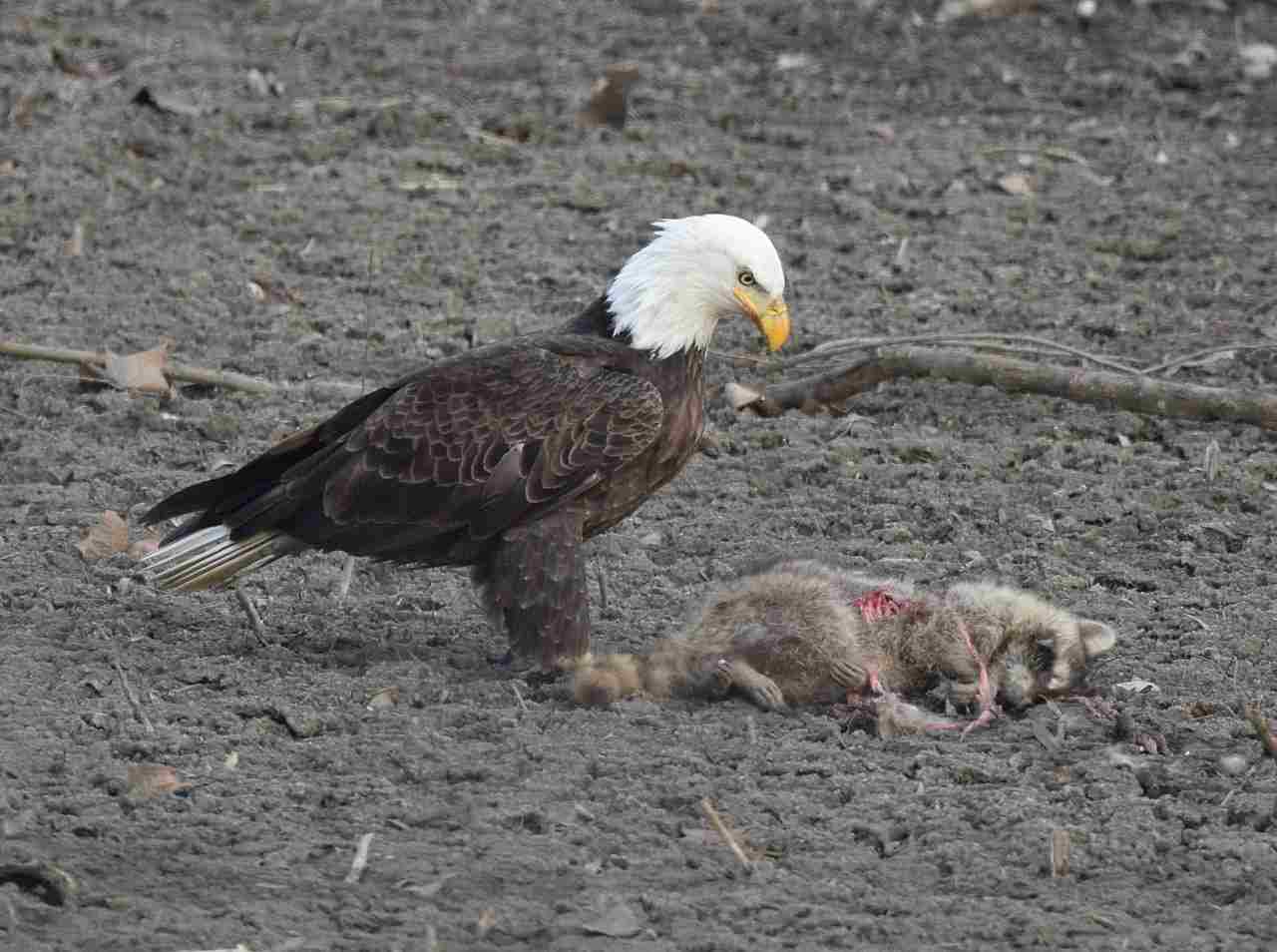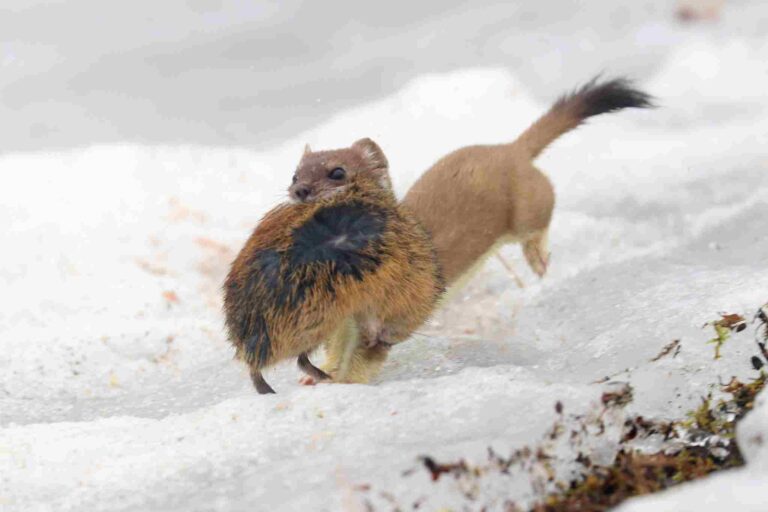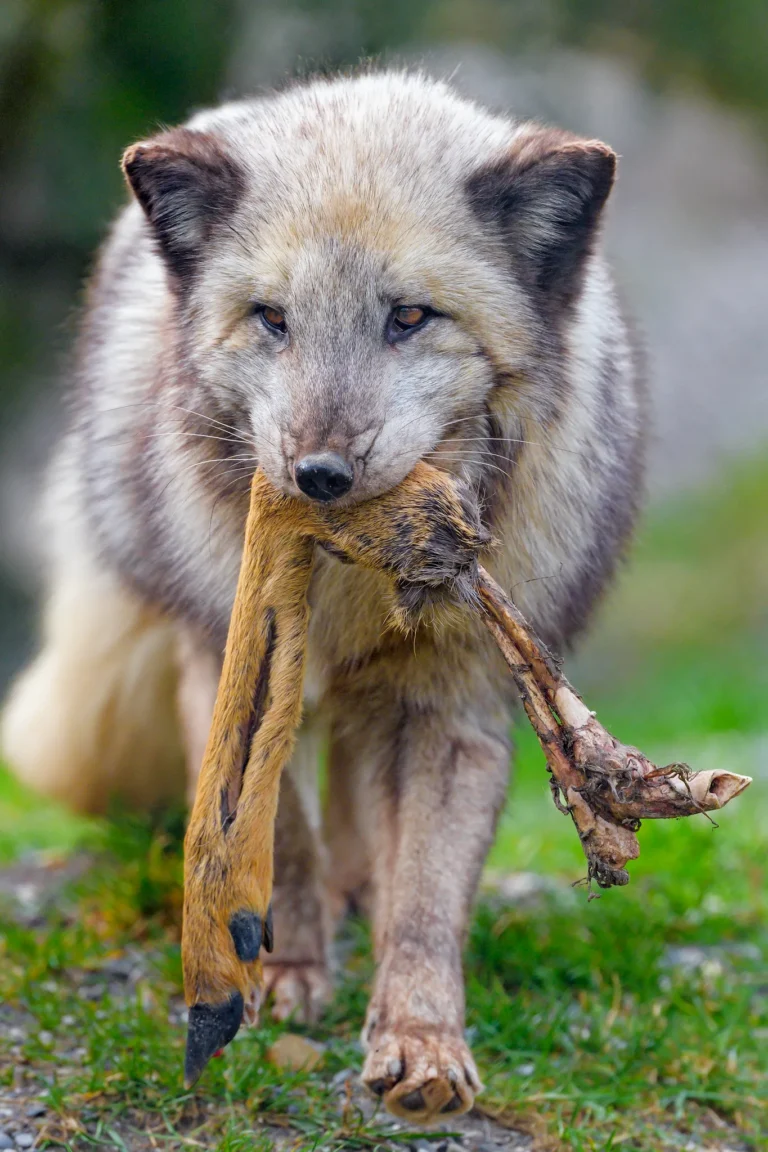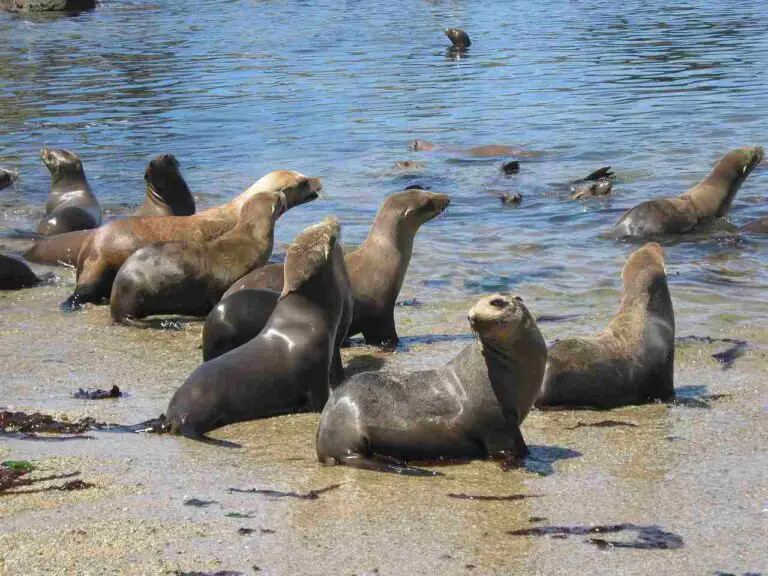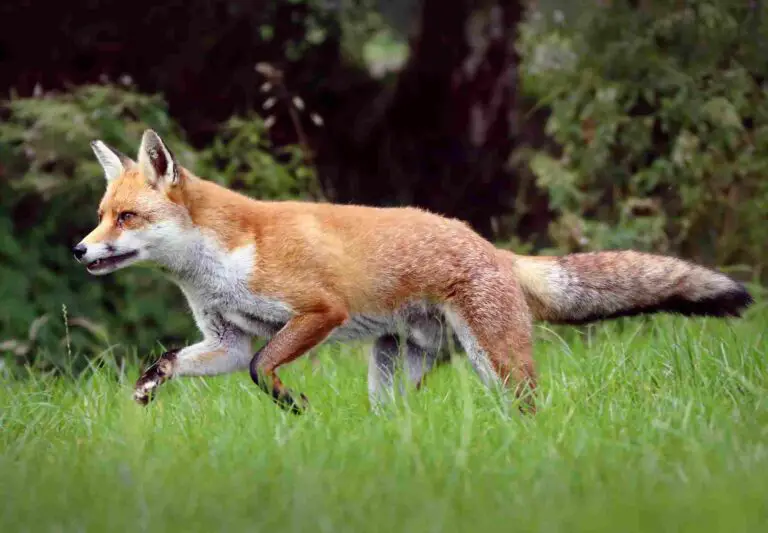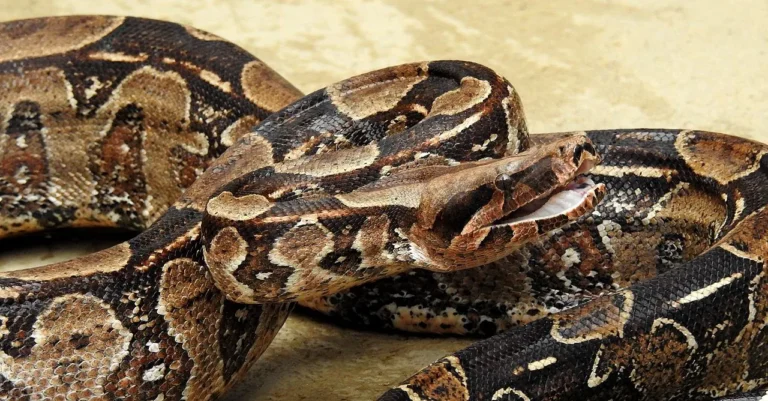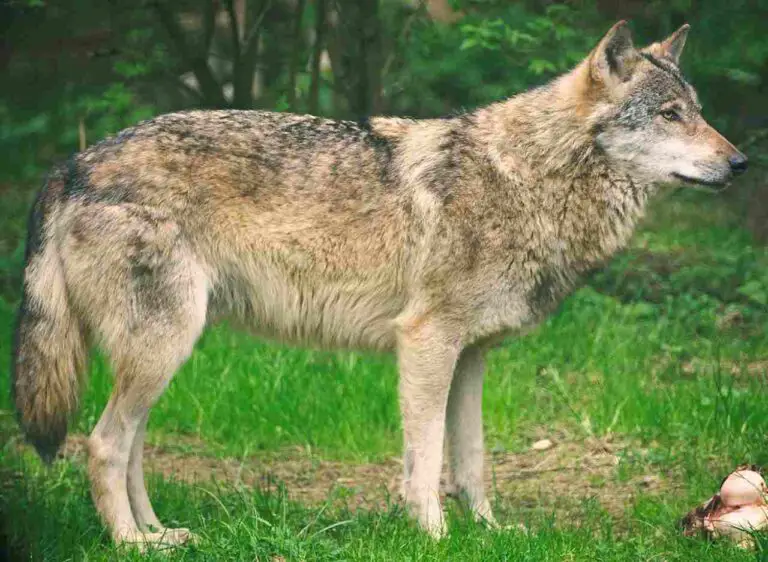Is an Eagle a Tertiary Consumer? Trophic Position of Eagles Revealed
An eagle is a tertiary consumer alongside other predators like ferruginous hawk, wolf, and cougar.
Reasons Why Eagles are Tertiary Consumers
1. Relatively Large Size
Eagles are considered tertiary consumers due to their relatively large size compared to other raptors like hawks, as well as compared to their prey. This size advantage allows eagles to hunt and consume a wide range of organisms, positioning them higher up in the food chain.
The large size of eagles gives them a distinct advantage when it comes to hunting. Their size allows them to take down larger prey, such as fish, small mammals, and even other birds. This predatory capability sets them apart from smaller raptors and places them in a higher trophic level.
In addition to their size, eagles possess advanced adaptations that further enhance their predatory capability. Their sharp talons and powerful beaks enable them to grasp and kill their prey effectively. Furthermore, eagles have exceptional eyesight, allowing them to spot potential prey from great distances. These adaptations, combined with their large size, make eagles formidable hunters and solidify their position as tertiary consumers in the food chain.
The trophic cascading effect is another reason why eagles are considered tertiary consumers. As apex predators, eagles play a crucial role in regulating the populations of their prey. By preying on secondary consumers, such as small mammals and fish, eagles help control their numbers, preventing overpopulation and maintaining a balanced ecosystem. This cascading effect demonstrates the significant impact that eagles have on the trophic structure of their habitats.
It is important to note that eagles primarily feed on other organisms rather than manufacturing their own food. They rely on the energy obtained from consuming other organisms to meet their nutritional needs. This characteristic aligns with the definition of a consumer, further supporting the classification of eagles as tertiary consumers.
2. Advanced Predatory Capability
Eagles possess advanced predatory capabilities that set them apart from other raptors and qualify them as tertiary consumers in the food chain. These capabilities include their hunting prowess, adaptations like sharp talons, and keen sight.
The hunting prowess of eagles is a key factor in their classification as tertiary consumers. With their relatively large size, eagles have the strength and agility to take down a wide range of prey. Their powerful wings allow them to soar high in the sky, scanning the landscape for potential targets. Once they spot their prey, eagles can dive down with incredible speed and precision, using their sharp talons to grasp and immobilize their victims.
The adaptations of eagles further enhance their predatory capability. Their talons are specially designed for hunting, with curved and razor-sharp claws that can easily penetrate the flesh of their prey. These talons provide a secure grip, allowing eagles to carry their catch back to their nests or feeding grounds. Additionally, eagles have exceptional eyesight, which is crucial for locating prey from great distances. Their eyes are adapted to detect even the slightest movements, enabling them to spot potential targets with remarkable accuracy.
These advanced predatory capabilities make eagles formidable hunters and position them higher up in the food chain. Their ability to successfully capture and consume a variety of organisms, including fish, small mammals, and other birds, demonstrates their role as tertiary consumers. By preying on secondary consumers, eagles contribute to the regulation of their populations and help maintain a balanced ecosystem.
Drawing from the discussion so far; advanced predatory capabilities of eagles, including their hunting prowess, adaptations like sharp talons, and keen sight, qualify them as tertiary consumers in the food chain. These characteristics enable eagles to effectively hunt and consume a wide range of organisms, positioning them higher up in the trophic levels. Their role as apex predators and their impact on the populations of their prey further solidify their classification as tertiary consumers.
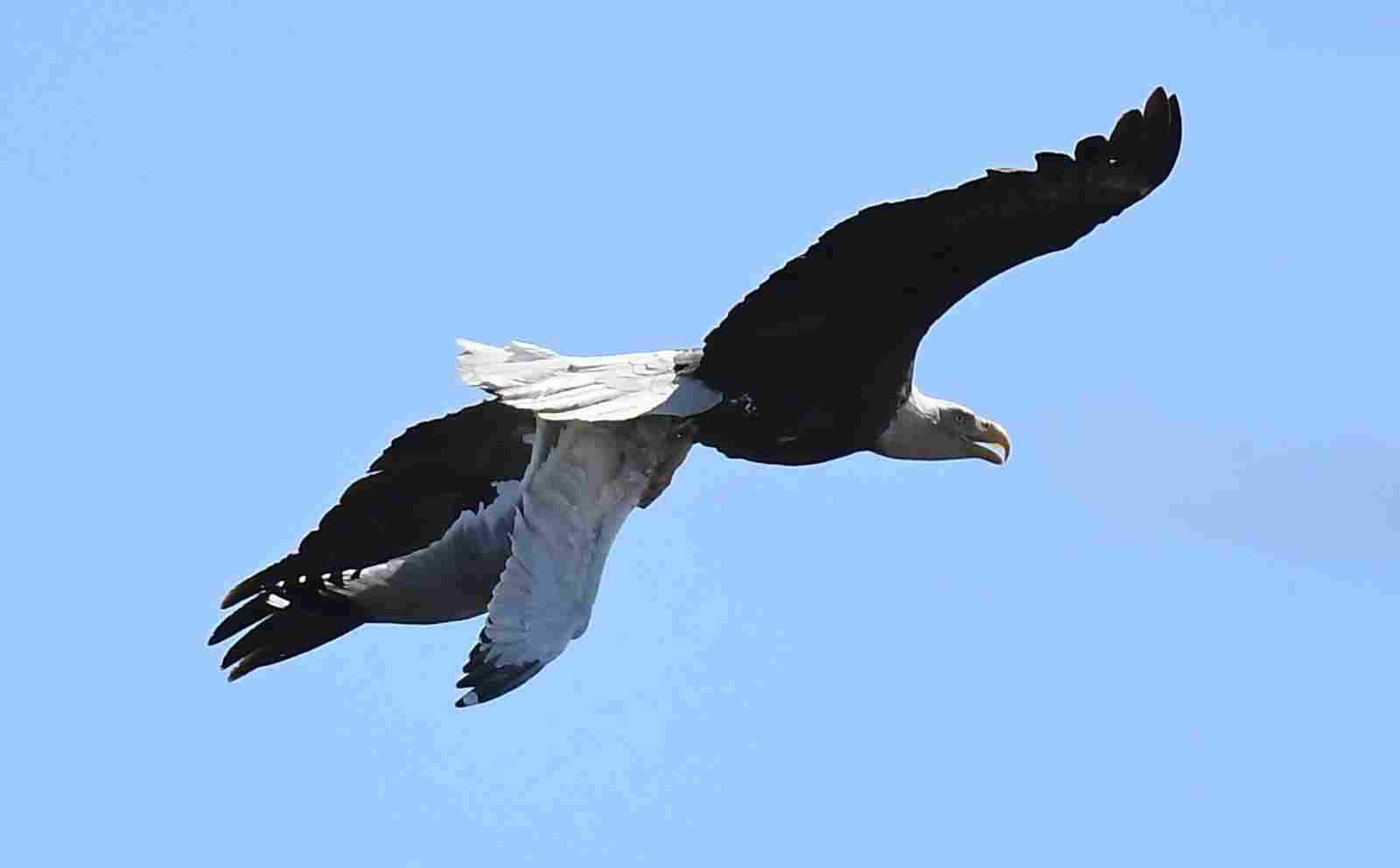
3. Trophic Cascading Effect
The trophic cascading effect is another reason why eagles are considered tertiary consumers in the food chain. This phenomenon occurs when changes in the population of one species have a ripple effect on the entire ecosystem. In the case of eagles, their predation on secondary consumers, such as foxes and some monkeys, can have significant impacts on the populations of these prey species.
When eagles prey on secondary consumers, it helps to regulate their populations. By reducing the number of these prey species, eagles prevent them from overpopulating and depleting their own food sources. This, in turn, allows primary consumers, such as herbivores, to thrive and maintain a healthy balance in the ecosystem.
The trophic cascading effect is a crucial ecological process that highlights the important role of tertiary consumers like eagles. Their predation on secondary consumers helps to maintain the overall stability and biodiversity of the ecosystem. Without the presence of eagles as tertiary consumers, the populations of certain prey species could become unbalanced, leading to negative consequences for the entire food chain.
Therefore, the trophic cascading effect is a key factor that qualifies eagles as tertiary consumers. Their predation on secondary consumers helps to regulate populations and maintain a balanced ecosystem.
4. Predation on Secondary Consumers
One of the key reasons why eagles are considered tertiary consumers is their predation on secondary consumers, such as foxes and some monkeys. This predatory behavior plays a crucial role in maintaining the balance and stability of the ecosystem.
When eagles prey on secondary consumers like foxes and monkeys, it helps to regulate their populations. By controlling the number of these prey species, eagles prevent them from overpopulating and depleting their own food sources. This predation acts as a natural form of population control, ensuring that the ecosystem remains in equilibrium.
The impact of eagle predation on secondary consumers can be seen through the concept of trophic cascading. As mentioned earlier, trophic cascading occurs when changes in the population of one species have a ripple effect on the entire ecosystem. In the case of eagles, their predation on secondary consumers has significant implications for the overall food chain.
By reducing the population of foxes and monkeys, eagles indirectly benefit primary consumers, such as herbivores. With fewer secondary consumers to prey upon them, herbivore populations can thrive and maintain a healthy balance. This, in turn, has positive effects on the vegetation and other organisms within the ecosystem.
The predation of eagles on secondary consumers also helps to prevent the overconsumption of primary producers. If the populations of secondary consumers were left unchecked, they could potentially decimate the herbivore populations, leading to a scarcity of food for the primary consumers. By keeping the numbers of secondary consumers in check, eagles ensure that the delicate balance of the food chain is maintained.
In addition to population control, the predation of eagles on secondary consumers contributes to the overall biodiversity of the ecosystem. By targeting a variety of prey species, eagles help to maintain a diverse range of organisms within the ecosystem. This diversity is essential for the stability and resilience of the ecosystem, as it allows for greater adaptability to environmental changes.
Is an Eagle a Consumer?
Yes, an eagle is indeed a consumer. In ecological terms, a consumer is an organism that obtains its energy and nutrients by consuming other organisms. Unlike plants and some bacteria, eagles cannot synthesize their own biomass through photosynthesis or other means. Instead, they rely on consuming other organisms to meet their energy and nutritional needs.
Eagles are carnivorous and predatory consumers. They primarily feed on other animals, such as fish, small mammals, birds, and reptiles. Their advanced predatory capabilities, including sharp talons and a strong beak, allow them to capture and kill their prey efficiently. This makes them well-suited for their role as top predators in many ecosystems.
As consumers, eagles play a vital role in maintaining the balance and stability of the food chain. By preying on other organisms, they help regulate the populations of their prey species. This prevents overpopulation and ensures that the ecosystem remains in equilibrium.
Eagles are neither saprophytic nor detritivorous. Saprophytic organisms obtain their nutrients by decomposing dead organic matter, while detritivores feed on detritus, which includes dead plant and animal material. Eagles, on the other hand, obtain their energy and nutrients directly from living organisms through predation.
The consumption of other organisms by eagles has significant ecological implications. It helps control the populations of secondary consumers, such as foxes and monkeys. By reducing the number of these prey species, eagles indirectly benefit primary consumers, such as herbivores. This allows herbivore populations to thrive and maintain a healthy balance, which in turn has positive effects on the vegetation and other organisms within the ecosystem.
Moreover, the predation of eagles on secondary consumers helps prevent the overconsumption of primary producers. If the populations of secondary consumers were left unchecked, they could potentially decimate the herbivore populations, leading to a scarcity of food for the primary consumers. By keeping the numbers of secondary consumers in check, eagles ensure that the delicate balance of the food chain is maintained.
In addition to population control, the consumption of a variety of prey species by eagles contributes to the overall biodiversity of the ecosystem. By targeting different organisms, eagles help maintain a diverse range of species within the ecosystem. This diversity is crucial for the stability and resilience of the ecosystem, as it allows for greater adaptability to environmental changes.
Why Eagles are Consumers
1. They Cannot Manufacture Their Own Food
Eagles cannot manufacture their own food, which is a key reason why they are consumers in the food chain. Unlike autotrophic organisms such as plants, eagles do not have the ability to produce their own energy through photosynthesis. Instead, they rely on other organisms for their source of energy.
As consumers, eagles obtain their energy by preying on other organisms. They are at the top of the food chain and feed on a variety of animals, including fish, small mammals, and birds. This predatory behavior allows them to obtain the necessary nutrients and energy they need to survive.
By not being autotrophic like producers, eagles play an important role in maintaining the balance of ecosystems. They help control the population of their prey, preventing overpopulation and maintaining the health of the ecosystem. This is especially important in the case of secondary consumers, as eagles help regulate their population through predation.
2. Eagles Prey On Other Organisms
Eagles are consumers because they prey on other organisms. This predatory behavior is a key reason why eagles occupy a trophic position as consumers in the food chain. By hunting and feeding on a variety of animals, including fish, small mammals, and birds, eagles obtain the necessary nutrients and energy they need to survive.
As top predators, eagles play a crucial role in maintaining the balance of ecosystems. They help control the population of their prey, preventing overpopulation and maintaining the health of the ecosystem. This is particularly important in the case of secondary consumers, as eagles regulate their population through predation.
By preying on other organisms, eagles contribute to the trophic cascading effect, where changes in the population of one species can have cascading effects on other species within the ecosystem. This can lead to a more balanced and stable ecosystem overall.
3. They are Neither Saprophytic Nor Detritivorous
Eagles are neither saprophytic nor detritivorous, which means they are not decomposers but rather consumers. This is an important reason why eagles occupy a trophic position as consumers in the food chain.
Saprophytic organisms obtain their nutrients by feeding on dead and decaying organic matter. Detritivorous organisms, on the other hand, consume detritus, which is the organic matter that comes from the decomposition of dead organisms. However, eagles do not rely on dead or decaying matter as a food source.
Instead, eagles are active hunters and predators. They rely on their advanced predatory capabilities to capture and feed on live prey. This includes a broad range of organisms such as fish, rodents, snakes, small canids, and waterfowl. By actively hunting and consuming live organisms, eagles obtain the necessary nutrients and energy they need to survive.
Eagles play a crucial role in the ecosystem as consumers. Their predatory behavior helps to control the population of their prey, preventing overpopulation and maintaining the balance of the ecosystem. This is particularly important in the case of secondary consumers, as eagles regulate their population through predation.
Furthermore, eagles contribute to the trophic cascading effect within the ecosystem. Changes in the population of one species, such as the prey of eagles, can have cascading effects on other species within the ecosystem. By preying on secondary consumers, eagles indirectly affect the population dynamics of other organisms in the food chain. This can lead to a more balanced and stable ecosystem overall.
Is a Bald Eagle a Tertiary Consumer?
Yes, a Bald Eagle is indeed a tertiary consumer, just like other species of eagles. These majestic birds have a diverse diet, which includes a broad range of food sources such as fish, rodents, snakes, small canids, and waterfowl. This means that they have the ability to prey on both primary and secondary consumers in the food chain.
Bald Eagles are skilled hunters and predators, using their advanced predatory capabilities to capture and feed on live prey. They have sharp talons and a powerful beak, which they use to catch and kill their prey. Their hunting skills allow them to target a variety of organisms, making them versatile consumers in the ecosystem.
In addition to actively hunting for live prey, Bald Eagles can also scavenge on carrion. This means that they can feed on dead animals that they come across, alongside other species of eagles. Scavenging on carrion provides an additional food source for Bald Eagles, especially during times when live prey may be scarce.
As tertiary consumers, Bald Eagles occupy a high trophic level in the food chain. They are positioned above the secondary consumers, which are organisms that feed on primary consumers. By preying on secondary consumers, such as small mammals and birds, Bald Eagles help to regulate their population and maintain the balance of the ecosystem.
The role of Bald Eagles as tertiary consumers is crucial in maintaining the stability of the ecosystem. Their predatory behavior helps to control the population of their prey, preventing overpopulation and its potential negative impacts on the environment. By keeping the population of secondary consumers in check, Bald Eagles contribute to the overall health and balance of the ecosystem.
Furthermore, the presence of Bald Eagles in an ecosystem can have cascading effects on other species within the food chain. This is known as the trophic cascading effect. Changes in the population of one species, such as the prey of Bald Eagles, can impact the population dynamics of other organisms in the ecosystem. For example, if the population of the prey species increases, it may lead to a decrease in the population of the primary consumers they feed on. This, in turn, can affect the availability of resources for other organisms in the ecosystem.
FAQs
1. Is an Eagle a Tertiary Consumer in the Food Chain?
Yes, typically, an eagle is considered a tertiary consumer in the food chain, in line with its feeding habits.
As a top predator, eagles occupy the highest trophic level in most ecosystems. They feed primarily on other organisms, such as fish, small mammals, and birds. By consuming these secondary consumers, eagles obtain energy and nutrients, establishing their position as tertiary consumers.
Eagles possess several characteristics that support their role as tertiary consumers. Firstly, their relatively large size allows them to capture and consume prey that is smaller in size. This size advantage enables them to target a wide range of organisms, including those at lower trophic levels.
Secondly, eagles have advanced predatory capabilities. Their sharp talons and powerful beaks enable them to catch and kill their prey efficiently. This predatory prowess allows them to effectively hunt and consume other organisms, further solidifying their position as tertiary consumers.
Additionally, eagles contribute to trophic cascades within ecosystems. By preying on secondary consumers, they help regulate the population sizes of these organisms. This, in turn, can have cascading effects on lower trophic levels, influencing the abundance and distribution of other species within the food chain.
2. Is an Eagle a Secondary Consumer?
The classification of an eagle as a secondary consumer is not usually very uncommon. However, it may be moved to the secondary consumer category depending on the scheme of classification and the presence of many higher-level predators that occupy the tertiary level.
When considering the trophic levels in a food chain, eagles are typically classified as tertiary consumers. This is because they primarily feed on other organisms, such as fish, small mammals, and birds, which are considered secondary consumers. By consuming these secondary consumers, eagles obtain energy and nutrients, establishing their position as tertiary consumers.
However, in certain classification schemes, the term “secondary consumer” may be used to describe organisms that directly consume primary producers, such as herbivores that feed on plants. In this context, eagles would not be classified as secondary consumers since they are carnivores and do not consume primary producers.
It’s important to note that the classification of an eagle as a secondary or tertiary consumer can vary depending on the specific ecosystem and the presence of other predators. If there are many higher-level predators occupying the tertiary level, eagles may be considered secondary consumers in that particular ecosystem.
3. Is an Eagle a Primary Consumer?
When considering the trophic position of an eagle, it is important to understand that they are not primary consumers. Eagles are carnivores, not herbivores, and they primarily prey on other organisms that are considered primary consumers, such as rabbits and small mammals.
As a top predator, eagles play a crucial role in the food chain by regulating the population of primary consumers. By preying on these organisms, eagles help to control their numbers and maintain a balanced ecosystem. This predatory behavior is a key characteristic that distinguishes eagles as tertiary consumers rather than primary consumers.
In the context of the food chain, primary consumers are organisms that directly consume primary producers, such as plants. They obtain their energy and nutrients by feeding on these producers. However, eagles do not consume primary producers but instead rely on other organisms for their sustenance.
It is important to note that the classification of an eagle as a primary consumer can vary depending on the specific ecosystem and the availability of prey. In some cases, if there is a scarcity of higher-level consumers and eagles rely heavily on primary consumers for their diet, they may be considered secondary consumers in that particular ecosystem.
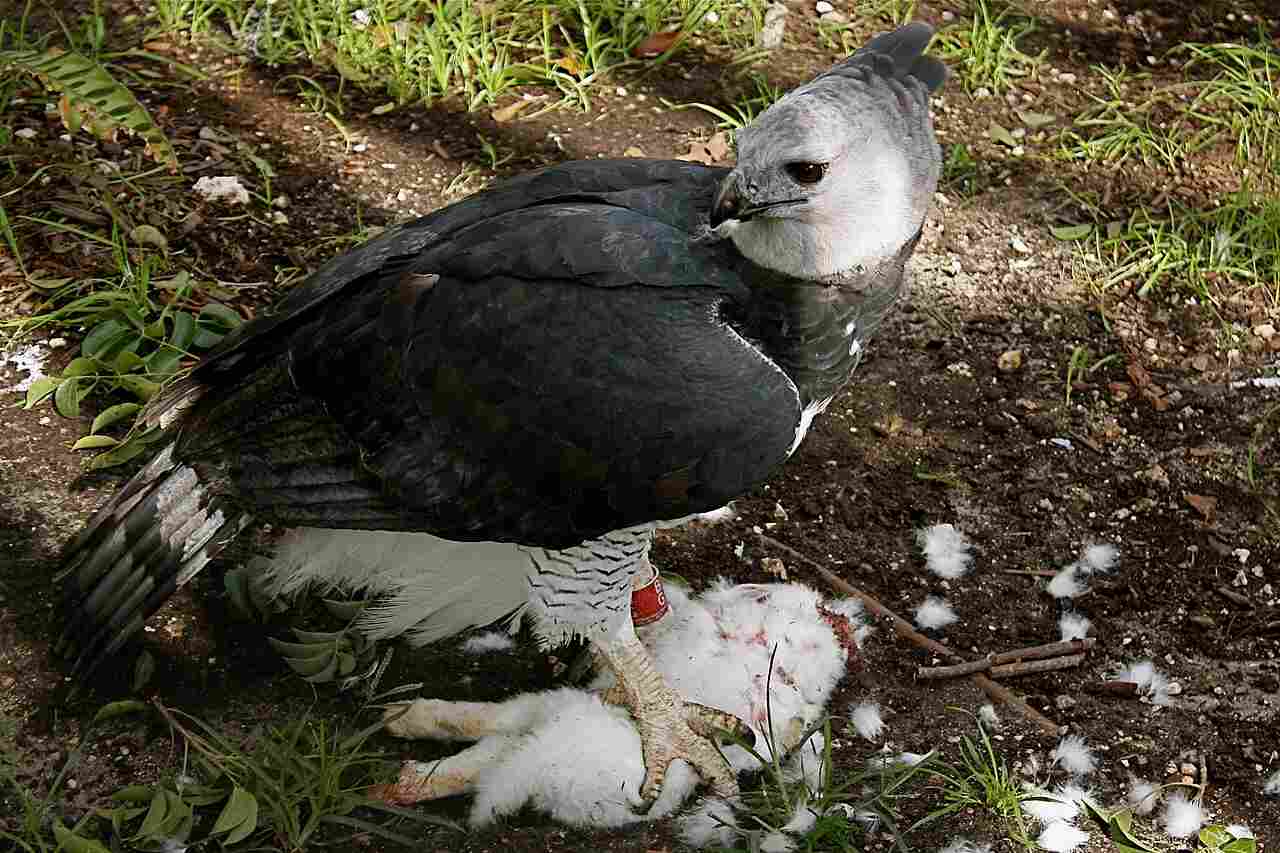
4. Are Eagles Quaternary Consumers?
Eagles are typically classified as tertiary consumers in most ecosystems. However, in certain situations where there are relatively few predators to fill the upper levels of the food chain, eagles can be considered quaternary consumers as well.
In a typical food chain, quaternary consumers are organisms that feed on tertiary consumers. They occupy the highest trophic level and play a crucial role in regulating the population of tertiary consumers. While eagles primarily prey on secondary consumers, such as rabbits and small mammals, they can also scavenge on the remains of other predators or feed on carrion, which would classify them as quaternary consumers.
The classification of eagles as quaternary consumers is dependent on the specific ecosystem and the availability of prey. In ecosystems with a scarcity of higher-level predators, eagles may rely more heavily on scavenging or feeding on carrion, which can elevate their trophic position to the quaternary level.
It is important to note that the classification of eagles as quaternary consumers is not as common as their classification as tertiary consumers. However, in certain ecological contexts, where the food web structure is unique, eagles can indeed be considered quaternary consumers.
5. Is Eagle a Consumer or Decomposer?
Eagles are definitely consumers in the food chain. They are not saprophytic or detritivorous, meaning they do not obtain nutrients from dead organic matter like decomposers do. Instead, eagles are at the top of the food chain and rely on hunting and predation to obtain their food.
As consumers, eagles play a vital role in maintaining the balance of ecosystems. They are skilled predators and have advanced predatory capabilities that allow them to capture and feed on other organisms. Eagles primarily prey on secondary consumers such as foxes, lizards, amphibians, snakes, and even some monkeys.
While eagles are not decomposers, they may scavenge on the remains of other animals or feed on carrion. Scavenging is the act of consuming dead animals that have already been killed by other predators or have died naturally. This behavior is more commonly observed in situations where prey is scarce or when eagles are unable to catch live prey.
In summary, eagles are consumers in the food chain. They obtain their energy and nutrients by preying on other organisms, particularly secondary consumers. Although they are not decomposers, eagles may scavenge on carrion or the remains of other animals. This scavenging behavior is an adaptation that allows them to survive in certain ecological contexts.
6. Why are Eagles Tertiary Consumers?
Eagles are considered tertiary consumers because they have the ability to prey on secondary consumers such as foxes, lizards, amphibians, snakes, and even some monkeys. This means that they occupy a higher trophic level in the food chain, feeding on organisms that themselves consume other organisms.
The reason why eagles are able to be tertiary consumers lies in their advanced predatory capabilities. With their sharp talons, powerful beaks, and exceptional eyesight, eagles are highly skilled hunters. They have the speed, agility, and strength to capture and kill their prey, making them formidable predators in their ecosystems.
By preying on secondary consumers, eagles play a crucial role in maintaining the balance of their respective ecosystems. They help regulate the population sizes of the organisms they feed on, preventing overpopulation and ensuring the survival of other species within the food chain. This is known as the trophic cascading effect, where changes in the population of one species can have cascading effects on the entire ecosystem.
Additionally, eagles’ position as tertiary consumers is also influenced by their inability to manufacture their own food. Unlike plants and some other organisms, eagles cannot undergo photosynthesis or produce their own nutrients. Instead, they rely on consuming other organisms to obtain the energy and nutrients they need to survive and thrive.
Conclusion
* In this article, we have explored the trophic position of eagles and discussed why they are considered tertiary consumers in their respective ecosystems.
* We began by examining the reasons why eagles are classified as tertiary consumers. Their relatively large size allows them to prey on secondary consumers, such as foxes, lizards, amphibians, snakes, and even some monkeys. This ability to consume organisms that themselves consume other organisms places eagles at a higher trophic level in the food chain.
* Furthermore, we delved into the advanced predatory capabilities of eagles, which contribute to their status as tertiary consumers. With their sharp talons, powerful beaks, and exceptional eyesight, eagles are highly skilled hunters. They possess the necessary speed, agility, and strength to capture and kill their prey, making them formidable predators in their ecosystems.
* We also explored the trophic cascading effect, which highlights the important role that eagles play in maintaining the balance of their ecosystems. By preying on secondary consumers, eagles help regulate the population sizes of the organisms they feed on. This prevents overpopulation and ensures the survival of other species within the food chain. Changes in the population of one species, such as eagles, can have cascading effects on the entire ecosystem.
* Additionally, we discussed the fact that eagles are consumers because they cannot manufacture their own food. Unlike plants and some other organisms, eagles are unable to undergo photosynthesis or produce their own nutrients. Instead, they rely on consuming other organisms to obtain the energy and nutrients they need to survive and thrive. This reliance on external sources of food further solidifies their position as consumers in the food chain.
* Eagles are indeed tertiary consumers due to their ability to prey on secondary consumers, their advanced predatory capabilities, and their role in maintaining the balance of their ecosystems through the trophic cascading effect. Their inability to manufacture their own food also reinforces their status as consumers.


